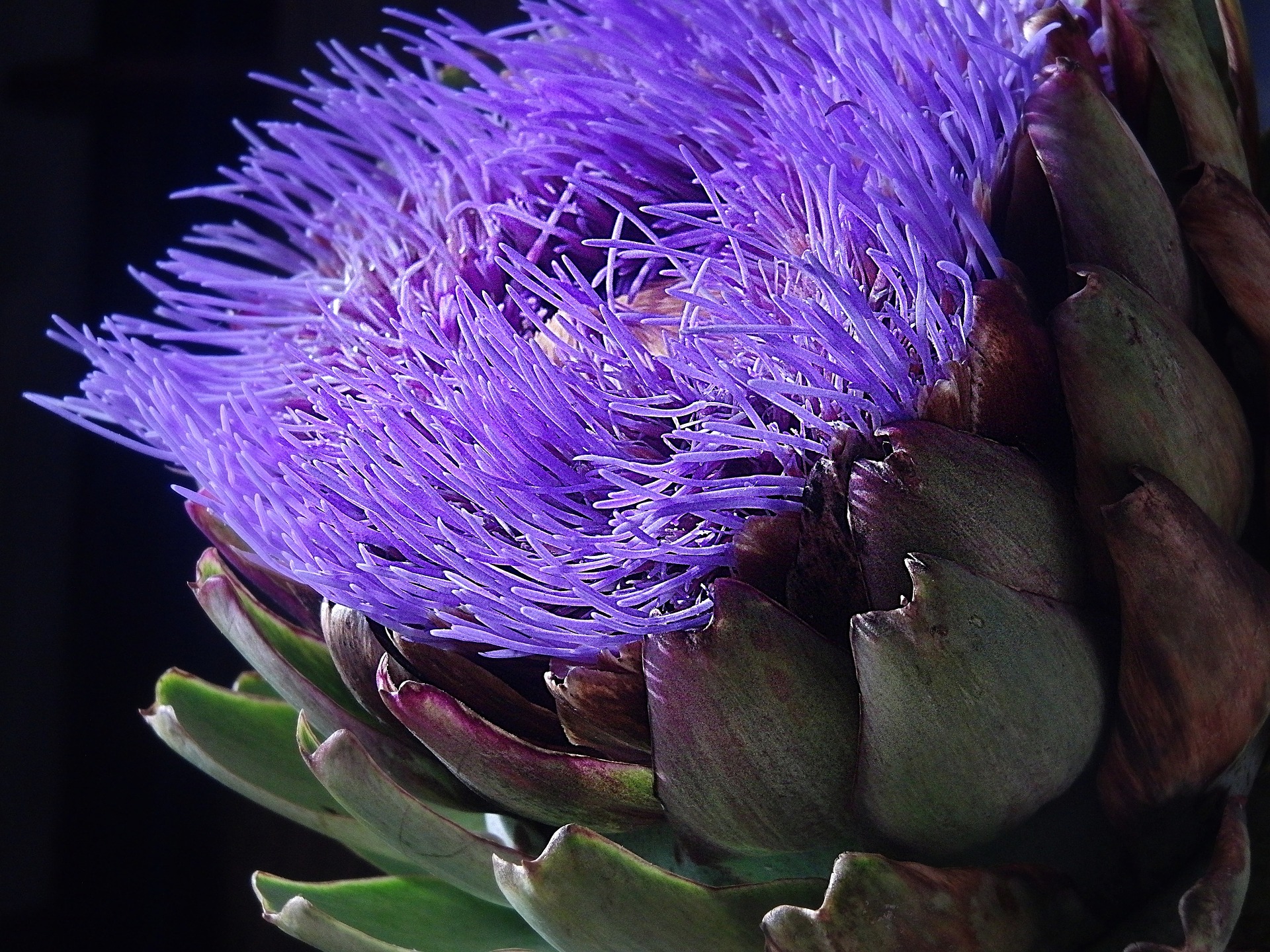By Diana Zahuranec
When steamed and pulled freshly hot from the pot, an artichoke smells like honey. It smells sweet and sticky-metallic, golden, if colors were aromas. I put my nose close to detect something vegetal, a scent that coincides with what the plant looks like. Still, there is that rich, warm honey in the background.
For this and for other reasons do I enjoy this mysterious, hazardous-looking plant that seems to warn a diner, “You can’t eat me! I’m prickly and indigestible.” This is only to be expected form an immature thistle bulb. But the artichoke holds pleasant surprises to the person willing to scrape the fibrous greens from its tough and tender leaves.
First of all, the eating method is singular. There is the act of picking away the green-purple leaves poking up from the thick stem one by one. The teeth scrape away the fleshy underside, and the taste is mild, unrelated to both honey and to the acidic, pickled artichoke hearts in brine, too often used to make a heavy cheese sauce. The taste and texture are subtle and delicate.
And when the outer leaves and middle layers are picked through, the inner foliage is lighter in color and can almost be eaten whole. Watch out for the sharp tips, which may or may not have softened during the cooking time. When the last translucent leaves are nibbled, the very inner heart of the unblossomed flower rests in hundreds of silken threads. Strangely, this part, called the choke, is inedible, even though it looks just like the softest part. But the choke is to be scooped out, while the rest of the stem and bud may be eaten. This part is almost a reward for the patient teeth-scraper who ate the vegetable leaf by unyielding leaf, and then suddenly has a mouthful of artichoke – soft and mild, if a little bitter – at the end.
Another satisfaction of the artichoke is choosing what dip to use. Melted butter with salt and perhaps herbs is a classic. Because the artichoke’s taste is un-commanding, any dip can be tested out on these leaves. Try a yogurt or mayonnaise-based dip mixed with lemon, olive oil, salt, pepper, and an array of spices, perhaps topped with Dijon mustard. Use up leftover pesto or other sauces, stretching them with olive or yogurt, and enhancing them with fresh herbs.
I also must admit that I enjoy these vegetables because I suffer from eating too quickly. With an artichoke, the diner may eat as fast as a munching rabbit, but it still takes much more time to finish, thus forcefully, finally, slowing me down.
As winter is the season for root vegetables, artichokes are a green treat. They can be prepared in multiple ways, although I have only tried steaming them, as I haven’t yet become bored with their simply steamed flavors. To prepare in this way, cut off the end of the stem and peel the extra-fibrous strings so that it’s easier to eat. Steam for 45 minutes, and eat hot or cold.
Author Diana Zahuranec is earning her Master’s in Food Culture and Communications at the University of Gastronomic Sciences in Piemonte, Italy by eating, drinking, traveling and studying about food in all of its wondrous, delicious aspects. She’ll be graduating in May 2012. Diana also writes for The Travel Belles, The Rambling Epicure, and Vineyard Adventures.
To find local food in your area, check out Pick-A-Pepper.com
Similar Stories:
- 20 Perennial Crops to Plant Now and Enjoy For A Lifetime.
- Local Food Is Elitist? Part I
- 10 Reasons Why You Should Eat Local
- How To Grow Stevia and Make Your Own Extract
- Broccoli Pesto




